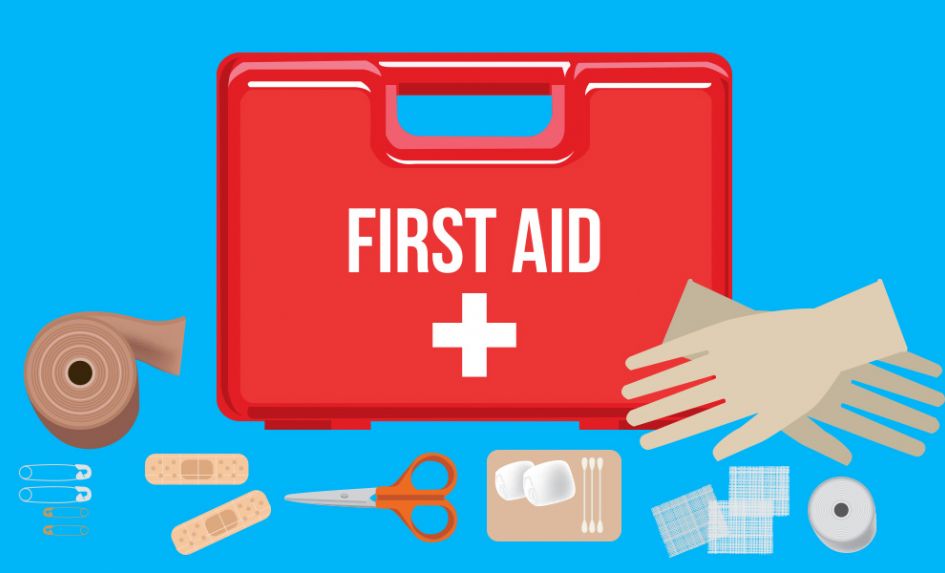Each year, around 2 million children are admitted to A&E due to an accident.
Accidental injury is one of the biggest single causes of death in the UK for children over the age of one, and while most of these accidents will happen at home, many occur at school – which is why it’s vital that staff are able to identify, prevent and treat such accidents.
Under the current regulations set out by the Health and Safety Executive, all employers must ensure that there’s adequate and appropriate equipment and facilities for providing first aid within the workplace.
In schools, there must be access to suitably stocked first aid kits at appropriate locations throughout the setting and when off site.
They must also put in place someone trained to provide first aid both on and off site (while ensuring there’s cover in the event of their sickness or absence) plus an appointed person, and provide clear information on the school’s first aid arrangements for its employees.
It’s the headteacher’s responsibility to ensure that these statutory requirements are met and that appropriate first aid training is provided.
This training should be enough to ensure that staff are competent, have confidence in their ability to support pupils with medical conditions and can fulfil the requirements set out in individual healthcare plans.
However, staff must never give prescription medicines or undertake healthcare procedures without appropriate training (which may need to be updated to reflect changes to individual healthcare plans).
Beyond this, it’s good practice to upskill all staff in basic first aid for common injuries and illnesses encountered in school, thus reducing the reliance on designated first aiders and potential delays.
Unless first aid cover forms part of an employee’s contract of employment with their school, those individuals who agree to become first aiders do so on a voluntary basis and must complete an HSE-approved training course.
Required knowledge
A one-day Level 3 Emergency First Aid at Work (EFAW) course for schools will comply with the HSE’s requirement that in a low risk school setting there be a first aider responsible for every 50 employees (though pupils and other staff are excluded from these numbers).
Ideally, a one-day EFAW course for schools should cover heart attacks, head and spinal injuries, allergic reactions and asthma attacks, in a manner applicable to both adults and children.
The main duties of first aiders in schools are to give assistance to casualties affected by injuries or illness, make the decision to call an ambulance if appropriate and refer to other medical professionals. Needless to say, your first aiders must be able to attend immediately in the event of an emergency.
An appointed person, on the other hand, takes charge when someone is injured or becomes ill, maintains first aid equipment (such as restocking first aid kits) and guides ambulance crews and other medical professionals to the location of the casualty.
An appointed person won’t need to complete training that complies with HSE regulations – a short practical or online course will suffice – which is why it’s important to note that appointed persons are not first aiders. They shouldn’t provide first aid treatment for which they haven’t been trained.
That said, it’s important that all staff (including lunchtime supervisors) are trained in recognising and giving immediate care to someone who is choking or experiencing an anaphylactic reaction. Emergency asthma inhalers have been widely available in schools for some time; staff should be able to spot when someone is experiencing an asthma attack and calmly manage the situation, referring as necessary.
As of October this year the same now applies to emergency adrenaline autoinjectors, which schools can obtain from a pharmacist for emergency use on children known to have a history of anaphylaxis. As such, all staff ought to be trained in the immediate recognition and treatment of acute allergic reaction and anaphylactic shock.
Environmental concerns
When undertaking risk assessments and assessing their first aid needs, schools ought to consider their size, location and any issues that might arise from the premises occupying split sites or multiple levels. If there’s more than one entrance to the school, emergency services should be given clear instructions as to where or to whom they should report.
Attention should also be paid as to whether there are any specific hazards or risks on site, which might include hazardous substances, dangerous tools and machinery.
Temporary hazards – building or maintenance work, for example – should also be noted and suitable short-term measures put in place. Pay attention also to whether there are any staff or pupils with special health needs or disabilities.
Schools should base their first aid provision on the result of their risk assessment and ensure that there’s adequate first aid cover during breaktimes and lunchtimes.
As well as encouraging lunchtime supervisors to have first aid training, it’s good practice to extend this to any agreements you might have with external contractors (providers of school meals, for example) by ensuring that they provide first aid training for their employees.
Emma Hammett is a registered general nurse and the founder/CEO of the first aid training provider First Aid for Life; for more information, visit firstaidforlife.org.uk or follow @firstaidforlife








